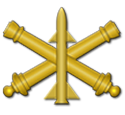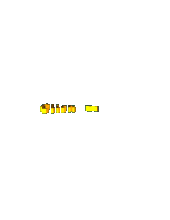

Charlie Battery - Kleingartach/Hardheim
23 Year Odyssey in Rural Germany - 1959 - 1983
![]() California State Military Museum
California State Military Museum
The California State Military Museum is located at 1119 Second Street in the Old Sacramento State Historical Park. It is only a few minutes walk from the State Capital, The California State Railroad Museum and several other fine museums, parks, and tourist attractions.
The museum, opened by Governor Pete Wilson in 1991, is the official military museum and historical research center of the State of California. This was reinforced on 11 September 2002 when Governor Gray Davis signed legislation making the museum a permanent museum under the California State Military Department and providing permanent funding for the museum. Finally on 13 July 2004, Governor Arnold Schwarzenegger signed legislation to amend the Government Code to make the museum the state's official military museum.
Today the museum houses over 30,000 artifacts as well a substantial library and archives. In addition to the main facility in Sacramento, the museum also has five satellite museums at Camp Roberts in southern Monterey County, Camp San Luis Obispo, Fresno Air National Guard Base, the Los Alamitos Joint Forces Training Base in Orange County and the National Guard Armory in San Diego.
The museum also maintains relationships with the Aerospace Museum of California at the former McClellan AFB in North Highlands and the Sons of the Revolution in the State of California Library in Glendale.
Complimenti, molto ben fatto ...! - Congratulations, very well done...! This is the official website of a fully restored Nike Battery in the mountains of north central Italy, including Nike Hercules Missiles, LCTs, etc. I couldn't believe what I was seeing.
A Google translation: - At an altitude of 1543 m, in the municipality of Folgaria (Trentino), the NATO Base Passo Coe - Mount Torarica was one of twelve Air Force deployed missile bases in northern Italy in the sixties, as part of NATO's air defense system of the South -Europe. Its function, like that of other bases, was to counter any air strikes by the countries of the Warsaw Pact.
The weapon system was based on the Nike missile - Hercules, a carrier surface - air armed with conventional warheads and nuclear warheads. The NATO base of Passo Coe - Mount Torarica was therefore one of their defensive principals of that historical period that has taken the name of the Cold War, the ideological conflict, economic and political relations between East and West after World avviatosi world War II, and luckily never resulted in a war fought. An international tension that marked the Second World War until the collapse of the Berlin Wall in 1989.
Congratulations. You've found Hole in the Head Press. We are a very small publishing company located in Bodega Bay, California. We focus primarily on publishing quality military history books. Our first offerings are on the Cold War continental air defense system.
Hole in the Head Press was created in 2002 to publish the second edition of “Rings of Supersonic Steel” as well as other books about the Cold War and the Atomic Age.
 Site Point - ALASKA - The Last Operational U.S. Nike-Hercules Missile Battalion
Site Point - ALASKA - The Last Operational U.S. Nike-Hercules Missile Battalion
This is about preserving a tiny bit of mostly forgotten trivia which was a part of the history of the Cold War. This history is rapidly disappearing as the inevitable march of time progresses, so for the benefit of those that may come after us, the documents indexed by this page were created in an attempt to preserve some of what was witnessed by the men who were there.
Site Point A battery was originally set up as a dual firing battery with four launcher sections instead of just the normal two. In addition, the IFC area of this battery included two of the standard main buildings, each with its normal compliment of towers for the various radars. I have always wondered why site Point was set up as a dual battery.
In the mid-40s, the US Army was in charge of devising an air-defense system to protect our country from new threats -- rockets and jet aircraft. Developed by Western Electric Bell Laboratories in 1945, it wasn't until 1953 when the world's first operational surface-to-air defense system was fully put into effect.
Nike Ajax was a radar guided missile capable of supersonic speeds with deadly accuracy. It was the last line of defense against enemy aircraft (and later, intercontinental ballistic missiles) if all other means failed. As the cold war progressed and threat of a nuclear attack became a frightening reality, better missiles and technologies we developed.
By 1963, all Ajax-only bases were deactivated while others were modified for Nike Hercules and Nike Zeus missiles. During the 70s, all Nike bases in the country were finally deactivated as technology and budgets shifted to meet other needs. While not a single Nike missile was fired at a hostile target during their years of service, the security they provided is worthy of our recognition, honor, and pride.
The 1950s were a tumultuous decade for the U.S. missile program. One persistent problem was inter-service rivalry: the Army and the Air Force squabbled over which service would develop surface-to-air missiles, and all three services fought for the right to develop long-range ballistic missiles. There were also internal disputes within the services. The Air Force was notably reluctant to develop long-range ballistic missiles, and it took a considerable amount of external pressure to convince Air Force leadership to develop the ICBM.
In summary, the Cold War missile program left behind a large and diverse collection of artifacts and structures. Today, hundreds of Nike batteries and ICBM launch facilities still dot the countryside. These launch sites, however, reflect only a fraction of the massive U.S. investment in the Cold War missile program. Behind the launch facilities stood hundreds of research laboratories, test sites, production facilities, training centers, and logistics and maintenance facilities. Many of these sites are still in use, but many others have been closed down, put to other use, or simply abandoned. Before these structures and artifacts are either altered or destroyed, it is important that they be examined and cataloged to enable future generations to gain a better understanding of the historical and cultural legacy of the Cold War missile program.
On September 4, 1888 by Executive Order, the “Old Government Reservation” next to San Pedro Bay became property of the U.S. War Department. In 1914 the property was named Fort MacArthur in honor of Lt. General Arthur MacArthur, Civil War Medal of Honor recipient and father of General Douglas MacArthur. And by 1919, construction had been completed on Fort MacArthur's main armament of four 14-inch rifles mounted on ingenious “disappearing carriages” and eight 12-inch mortars mounted in massive concrete emplacements.
After World War I, Fort MacArthur was regularly used for training and housing of California National Guard units, Citizens Military Training Corps, Army Reserve units, and the Civilian Conservation Corps. In 1920, four 3-inch anti-aircraft guns were added to the post's arsenal and two 155mm guns were delivered in 1928. The biggest additions of firepower came to Fort MacArthur in 1925 and 1930 in the form of two 14-inch railway guns. Named Battery Irwin, these mobile guns could fire their 1400 lb. shells a distance of 27 miles and were eventually stored in special “breakaway” buildings.
After the attack on Pearl Harbor on December 7, 1941, additional 155mm and 3-inch anti-aircraft guns were added to the defenses of Los Angeles and a new fortification program hurried toward completion. This included the addition of Battery Paul D. Bunker located at White Point, and another unnamed 16-inch battery at Bolsa Chica beach that was never completed. These batteries were armed with two 16-inch barbette mount guns enclosed under large concrete portals. These were the largest and most powerful seacoast defense guns ever deployed by the United States and had a maximum range of about 26 miles.
From 1950-1974, Fort MacArthur was part of the Nike surface-to-air defense system. At its peak in 1958, over eighteen missile launch sites were administered through Fort MacArthur at areas surrounding Los Angeles -- from the San Gabriel Mountains to the north and the Whittier Hills to the east. In 1954 a Nike Ajax missile launching complex was installed at White Point, and Batteries Leary - Merriam were converted as its radar control station. The launch facility was later upgraded to support the nuclear-armed Nike Hercules System. In the 1970s the Nike missile system was declared obsolete and all of the sites were deactivated.
Our organization was founded on the principal of protecting the history of Fort MacArthur and we do believe that a policy of adaptive reuse should be employed in a way that preserves the architectural and historical significance of the structures while still providing the necessary space needed by the other tenants of Angeles Gate.
![]() Delta Battery - 2nd Missile Battalion, 1st Artillery - 32nd ADCOM
Delta Battery - 2nd Missile Battalion, 1st Artillery - 32nd ADCOM
As part of USAREUR and Seventh U.S. Army, it maintained a constant watch over West Germany in support of NATO. In November 1975, Headquarters Battery, 32d AADCOM moved from Kapaun Barracks in Kaiserslautern to Cambrai-Fritsch Kaserne in Darmstadt, Germany.
 Nike Ajax And Hercules Missile Sites of Connecticut
Nike Ajax And Hercules Missile Sites of Connecticut
Welcome to coldwar-ct.com, a site dedicated to preserving Connecticut's cold war history. At the top of this page you will find links to pages on Cold War related Business and Industry, Civil Defense, Military Bases and Telecommunications. Initially our emphasis will be on facilities, manufacturing plants, shelters and systems involved in supporting the Cold War effort in the CT area.
![]() Christopher Bright’s Cold War Book
Christopher Bright’s Cold War Book
Continental Defense In The Eisenhower Era: Nuclear Antiaircraft Arms and the Cold War
This book tells the interesting and little known story of the thousands of nuclear antiaircraft weapons which were deployed in more than one hundreds locations around cities and defense installations in the United States during most of the Cold War. Beginning in Dwight D. Eisenhower's presidency, these Army Nike-Hercules missiles, Air Force Genie rockets, and BOMARC and Falcon missiles were meant to destroy Soviet planes over (or near) U.S. airspace before they attacked America with atomic bombs.
Based upon once-secret government documents (including some declassified especially for this study) from the White House, Pentagon, and elsewhere, Continental Defense in the Eisenhower Era reveals that: the existence of these arms was well known to the American public, and they were widely accepted;military officers had the authority to use them in certain circumstances without further approval;... etc...







